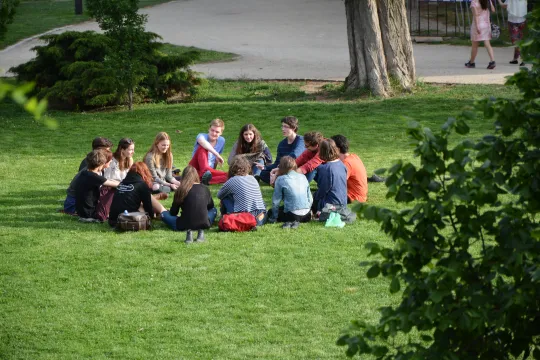Active banners: 0 Visible banners: 0
All We Can Save Circles
Provided by: The All We Can Save Project |Published on: June 24, 2022
Lesson Plans
9101112
Synopsis
- This resource is a guide for creating and facilitating a climate support group for discussing, reflecting, connecting, and learning about the climate crisis.
- The guide includes ten outlines for leading "Circle" meetings that begin with introductions and end with ideas for moving forward.
- Each includes an opening, check-in, discussion, journal prompt, closing, workplace exploration (which could easily translate to a school, or district, or community exploration), and a list of supplementary reading and listening materials.

Subjects: Science, Social Studies, English Language Arts, Health
Authors: The All We Can Save Project
Region: Global
Languages: English
Teaching Materials
Positives
- This resource will create a safe space for caring and ready-for-action learners to connect with each other.
- Each session is laid out in the same format and includes a wealth of interesting and thought-provoking topics and resources to discuss and learn from.
Additional Prerequisites
- A circle would best be formed from students who have learned about the climate crisis and are open to discussing their feelings about it.
- Before each session, go through and choose a few of the supplemental materials to focus on, as the entire list may be too much to accomplish or discuss in one sitting.
Differentiation
- This resource would work well in science and language arts classes, as the work is so intertwined between the subjects.
- A circle could be formed from an entire small class or a larger class could be broken into groups.
- Consider grouping students based on how open they are to having honest and meaningful dialogues, as this is a major component of the project.
- As an extension, suggest that interested students lead their own circles outside of the classroom in their community.
- Other related resources include this lesson about having climate change conversations, this video about the push to create doubt about climate change, and this activity about young people taking climate action.
Scientist Notes
Teaching Tips
Standards
Resource Type and Format
About the Partner Provider

The All We Can Save Project
The All We Can Save Project is on a mission to embed climate truth, courage, and just solutions in education — and to make it exceedingly easy to use the All We Can Save anthology within classrooms and beyond.
All resources can be used for your educational purposes with proper attribution to the content provider.



